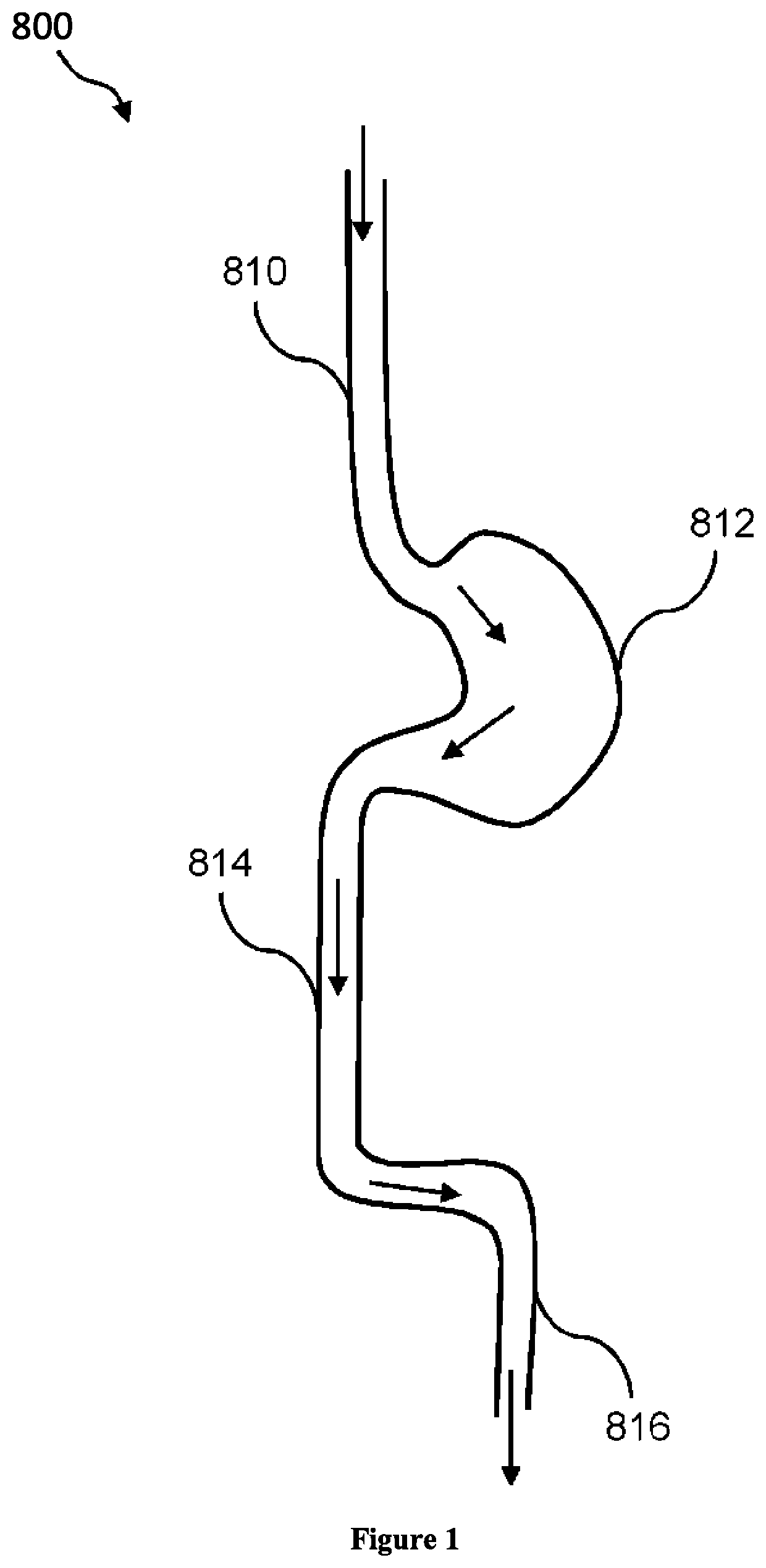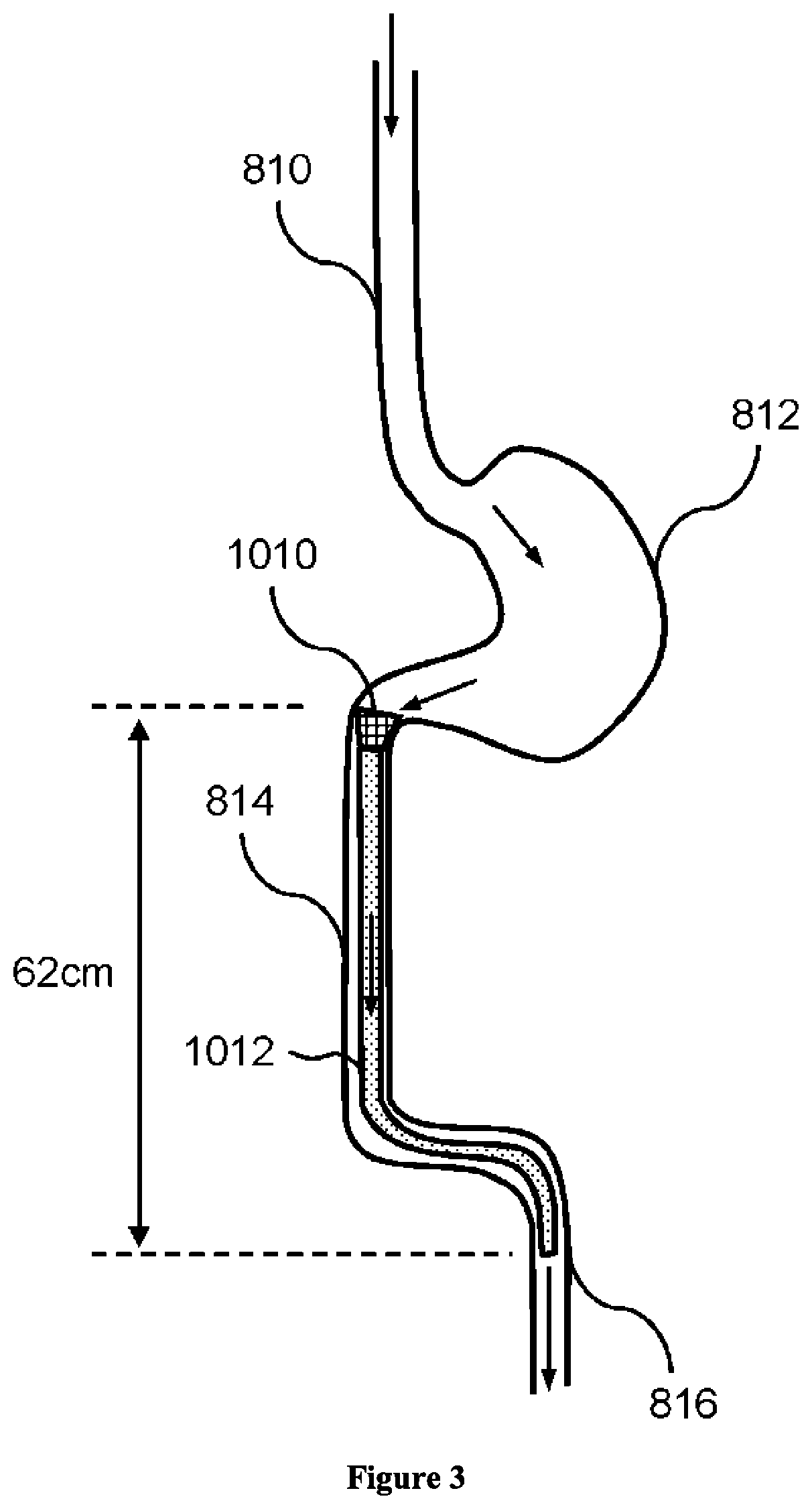Composition and method for treatment of metabolic disorders
a metabolic disorder and composition technology, applied in the field of therapeutic compositions, can solve the problems that surgery and other solutions have not been widely adopted, patients with diabetes sometimes hesitate to begin insulin therapy, etc., and achieve the effect of effectively treating metabolic disorders, hydrating or dissolving quickly, and safely eliminating through excretion
- Summary
- Abstract
- Description
- Claims
- Application Information
AI Technical Summary
Benefits of technology
Problems solved by technology
Method used
Image
Examples
example 1
Formulations
[0093]This example sets forth illustrative formulations of the invention.
[0094]
TABLE 1Formulation 1IngredientAmountChitosan1.0 gAcetic Acid1.0 gDI Waterqs (to 100 g)
[0095]
TABLE 2Formulation 2IngredientAmountChitosan0.30 gAcetic Acid buffer (pH = 4.7)qs (to 100 g)
[0096]
TABLE 3Formulation 3IngredientAmountChitosan3.0ghydroxyethylcellulose0.50gdextran0.30gsodium dihydrogenphosphate dihydrate0.25g1N sodium hydroxideq.s.hydrochloric acidq.s.sterile purified waterq.s. to 100g total weight
[0097]Formulation 3 was prepared as follows. A viscous, aqueous solution was prepared by mixing chitosan and water using Brinkmann Heidolph Electronic High-Torque Overhead Stirrer and a 4-blade 40 mm propeller rotating at 200-300 rpm. An aqueous solution of hydrochloric acid was added with stirring to give a clear gel. An aqueous solution of, sodium dihydrogenphosphate dihydrate and was added with stirring to give a clear solution. Hydroxyethylcellulose and dextran were added with stirring to ...
example 2
Mucoadhesive Viscosity Assay Using Rheometer
[0105]The rheological properties and flow behavior of all formulations are measured using a programmable Brookfield Model DV-IIIT rheometer (Brookfield Engineering Laboratories, Inc., USA). The rheometer is used with the SC4-18 / 13R spindle and small sample adaptor at 37.0±0.1 C. Stock solutions of chitosan are prepared (2.0% w / w) in DI water, 1% acetic acid, or 0.1M acetate buffer (pH=4.7). Dried mucin is hydrated with each medium by gentle stirring for 3 h at room temperature to yield a dispersion of 10% w / w. A 5 gram aliquot of mucin dispersion is mixed on a vortex mixer with a 5 gram aliquot of the polymer solution in the corresponding media to give a concentration of 1.0% w / w with respect to polymer. The final concentration of mucin is 5% w / w. All materials are kept at 37.0±0.1 C for 1 h to equilibrate prior to analysis. Samples of each formulation are added to the chamber of the rheometer and allowed to equilibrate for at least 2 min ...
example 3
Mucin Complexation Turbidity Assay
[0110]Terms—These terms are used throughout the Examples.[0111]MW=Molecular weight[0112]LCS=50-190 kDa Chitosan[0113]MCS=190-310 kDa Chitosan[0114]PAA=poly(acrylic) acid[0115]HEC=hydroxyethylcellulose[0116]CA=Carbopol 974P-NF[0117]HA=Hyaluronic Acid[0118]PVP=Polyvinylpyrrolidone[0119]PVP-DMA=Polyvinylpyrrolidone-co-2-dimethylaminoethyl methacrylate[0120]PVP-CVA=Polyvinylpyrrolidone co-vinyl acetate[0121]GC=Commercial Gelclair™[0122]RC=Commercial Rincinol™[0123]MG=Commercial MuGard™[0124]PVA=Mowiol (Polyvinyl Alcohol mw 205K)[0125]PMVE-MA=Poly(methyl vinyl ether-alt-maleic acid)[0126]PDC=Poly(diallyldimethylammonium chloride)
[0127]Methods
[0128]Mucin Preparation
[0129]Porcine gastric mucin at 1% (w / v) was suspended in 100 mM acetate buffer solution (ABS), pH 4.7 overnight for complete dispersion. The dispersion was then centrifuged at 1,400 rpm at 4 degrees Celsius centrifuge machine. Supernatant was collected and refrigerated until use.
[0130]All polym...
PUM
| Property | Measurement | Unit |
|---|---|---|
| length | aaaaa | aaaaa |
| lengths | aaaaa | aaaaa |
| lengths | aaaaa | aaaaa |
Abstract
Description
Claims
Application Information
 Login to View More
Login to View More - R&D
- Intellectual Property
- Life Sciences
- Materials
- Tech Scout
- Unparalleled Data Quality
- Higher Quality Content
- 60% Fewer Hallucinations
Browse by: Latest US Patents, China's latest patents, Technical Efficacy Thesaurus, Application Domain, Technology Topic, Popular Technical Reports.
© 2025 PatSnap. All rights reserved.Legal|Privacy policy|Modern Slavery Act Transparency Statement|Sitemap|About US| Contact US: help@patsnap.com



